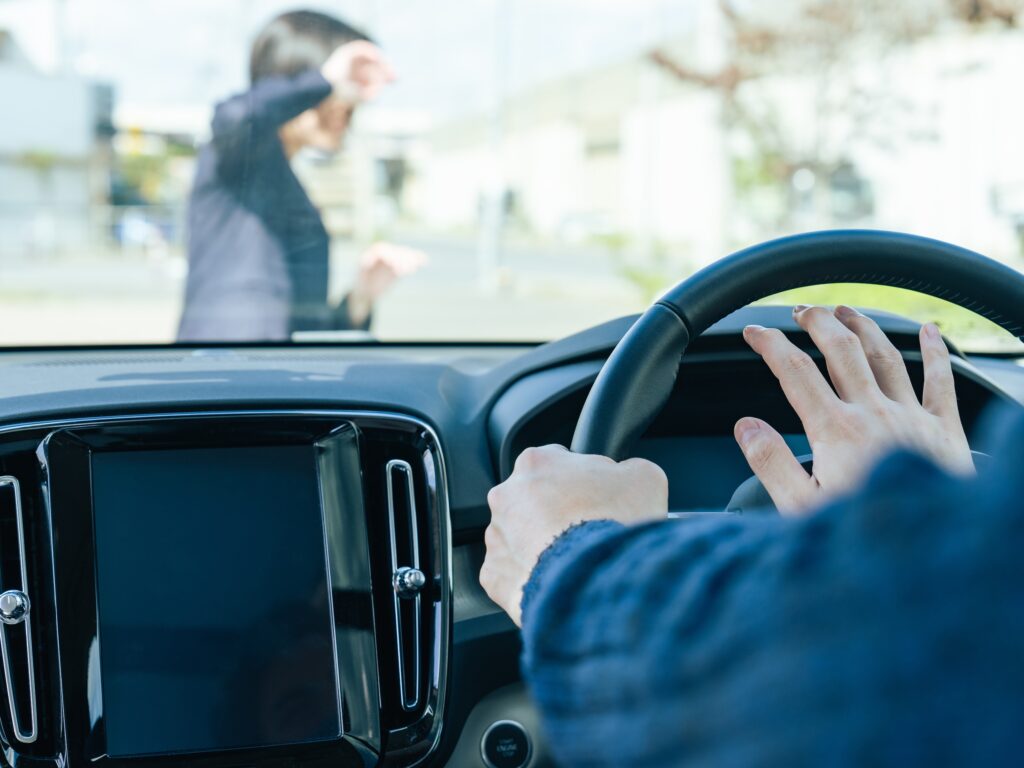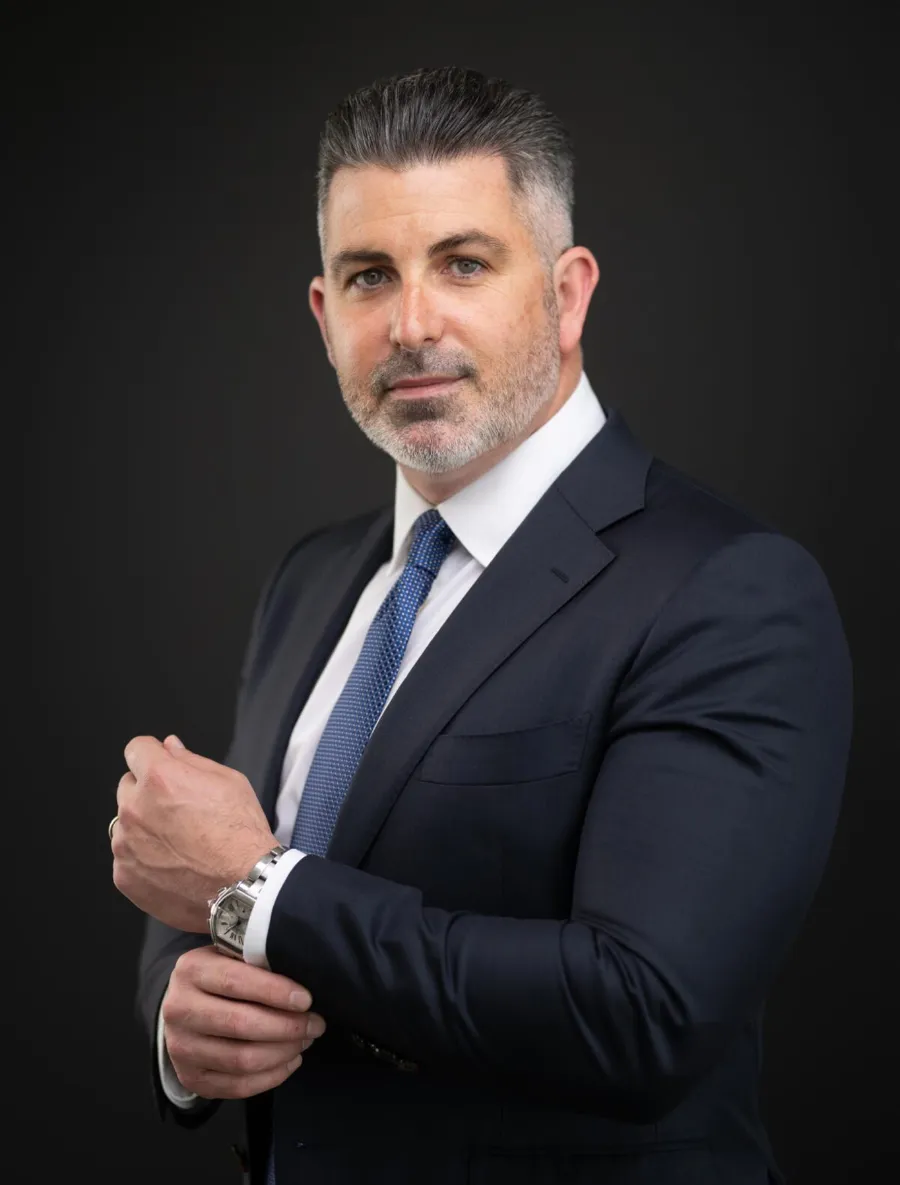
Pedestrian accidents are more than just unfortunate collisions; they're life-altering events that can leave victims grappling with physical injuries, emotional trauma, and financial burdens. Determining who's at fault becomes the cornerstone of any compensation claim when you've suffered an injury as a pedestrian.
Proving fault involves establishing legal responsibility through evidence, testimony, and applying traffic laws. This process can feel daunting, but it's also the key to recovering damages for your injuries and losses. A Dallas pedestrian accident lawyer will be pivotal in helping you build a compelling case.
Schedule A Free Case Consultation
How Physical Evidence Helps Determine Fault
Physical evidence often serves as the foundation for proving fault in pedestrian accidents. Skid marks, vehicle damage, and debris at the scene can reveal vital details about the events leading up to the collision. For example, the length and direction of skid marks can show whether the driver tried to stop or was traveling at an unsafe speed. Similarly, the location of debris can help reconstruct the impact point, shedding light on whether the pedestrian was in a crosswalk or jaywalking.
A pedestrian accident lawyer will collaborate with accident reconstruction professionals to analyze physical evidence. These professionals use scientific methods to recreate the accident, providing a detailed account of how it occurred. For instance, they may calculate the vehicle's speed based on the length of skid marks or assess the impact angle to determine whether the driver was turning or traveling straight. This analysis can be pivotal in demonstrating that the driver acted negligently, such as by failing to yield or driving recklessly.
Physical evidence can also point to external factors contributing to the accident, such as poor road conditions or inadequate signage. If a pothole caused the driver to swerve or a malfunctioning traffic light led to confusion, these factors can influence the determination of fault. Your attorney will gather evidence from municipal records or maintenance logs to support these claims, thoroughly examining all contributing factors.
Leveraging Surveillance and Dashcam Footage
Surveillance cameras and dashcams have become invaluable tools for analyzing pedestrian accidents. Footage from nearby businesses, traffic cameras, or private residences can provide an unfiltered view of the accident, capturing details that might otherwise go unnoticed. For instance, video evidence can show whether the driver was distracted by a phone, failed to stop at a red light, or was speeding through a school zone.
Dashcam footage, in particular, offers a driver's-eye view of the accident, providing insights into their behavior and road conditions. A pedestrian accident attorney will obtain and review this footage to identify any signs of negligence, such as delayed braking or erratic driving. Dashcams can also capture audio, which may reveal whether the driver was talking or listening to loud music at the time of the accident.
Surveillance footage can also corroborate or contradict witness statements, adding another layer of credibility to the evidence. For example, if a witness claims that the pedestrian darted into traffic, video evidence can confirm or refute this assertion. An attorney will use this footage to build a compelling case, highlighting inconsistencies in the opposing party's narrative and strengthening their client's claim for compensation.
Traffic Violations and Driver Behavior
Traffic violations are often a key factor in establishing fault in pedestrian accidents. A driver who runs a red light, fails to yield at a crosswalk or exceeds the speed limit clearly violates traffic laws, providing strong evidence of negligence. A pedestrian accident lawyer will obtain police reports and traffic citations to identify any violations committed by the driver, using these records to build their case.
Driver behavior during the accident can also reveal signs of negligence. For instance, a driver who was texting, eating, or adjusting the radio may have been distracted, reducing their ability to react to the pedestrian. Similarly, a driver under the influence of alcohol or drugs poses a significant risk to pedestrians, as their judgment and reaction times are impaired. Lawyers will gather evidence of these behaviors, such as cellphone records or toxicology reports, to demonstrate the driver's culpability.
Sometimes, a driver's history of traffic violations can also be relevant. A pattern of reckless driving or repeated offenses can indicate a disregard for traffic laws, strengthening the argument that the driver was at fault. An attorney will request the driver's record from the Department of Motor Vehicles (DMV) to identify any prior violations, using this information to support their claim.
Synthesizing Evidence to Build a Cohesive Case
Analyzing evidence in pedestrian accident cases involves synthesizing information from multiple sources to create a cohesive narrative. A pedestrian accident lawyer will meticulously review physical evidence, witness testimonies, medical records, and traffic violations to identify patterns and inconsistencies. They'll use this information to construct a timeline of events, highlighting the driver's negligence and the pedestrian's adherence to traffic laws.
Skilled attorneys will also anticipate potential defenses the opposing party raises, such as claims that the pedestrian was jaywalking or acting recklessly. By addressing these arguments with evidence, such as surveillance footage or eyewitness accounts, they can preemptively counter these claims and strengthen their case. The goal is to present a clear and compelling argument that leaves no room for doubt about the driver's liability.
A pedestrian accident lawyer will use every available resource to uncover the truth. Whether through physical evidence, witness testimonies, or medical records, the pursuit of justice begins with meticulously examining the facts.
The Intersection of Eyewitness Accounts and Forensic Data

When combined, eyewitness testimony and forensic evidence create a powerful narrative that can significantly influence the outcome of a pedestrian accident claim. While forensic data provides the objective framework, eyewitness accounts add depth and context, humanizing the facts and making them more relatable to a jury. Together, they offer a comprehensive picture of the events leading to the accident, addressing both the "how" and the "why."
For example, forensic evidence might show that a driver was traveling 45 miles per hour in a 30-mile-per-hour zone. At the same time, an eyewitness can describe the driver's erratic behavior, such as swerving or accelerating aggressively. These complementary pieces of evidence can paint a vivid picture of negligence, strengthening your compensation claim.
Attorneys will often use this intersection of evidence to address potential defenses preemptively. Forensic evidence might confirm your location if the driver argues you were jaywalking. An eyewitness can testify you waited for the signal to change before crossing. This dual approach bolsters the injured party's case and undermines the credibility of the opposing party's arguments.
Digital Evidence and Its Growing Importance
Evidence from smartphones, dashcams, and surveillance cameras has become increasingly valuable in pedestrian accident cases. These sources can provide real-time documentation of the events leading to the collision, offering a level of detail that is difficult to dispute.
Digital evidence also extends to data from smartphones and GPS devices. For example, a driver's phone records might reveal that they were texting during the accident, supporting distraction claims. GPS data can show the vehicle's speed and location, providing further context for the collision. These digital breadcrumbs can be invaluable in establishing fault, particularly in cases where physical evidence is sparse or inconclusive.
Unlike traditional forms of evidence, which rely on interpretation, digital data often speaks for itself. A pedestrian accident lawyer will know how to obtain and analyze this information, using it to strengthen their client's case. For example, they might subpoena phone records or request footage from nearby cameras, piecing together a timeline that supports your claims.
The Complex Nature of Fault in Pedestrian Accident Cases
Proving fault in pedestrian accident compensation claims often feels like unraveling a tangled web of legal, factual, and circumstantial elements. For example, a driver may argue that a pedestrian darted into traffic, while the pedestrian may claim the driver was distracted. These conflicting narratives often lead to extended disputes.
Ambiguities That Could Affect Your Case
Fault determination becomes even more intricate when environmental factors, such as poorly marked crosswalks or malfunctioning traffic signals, come into play. In such cases, liability may extend beyond the driver or pedestrian to include municipalities or contractors responsible for road maintenance. A pedestrian accident lawyer will work to untangle these complexities by gathering evidence that clearly shows what happened and who should be held accountable.
Insurance companies thrive on these ambiguities. They often exploit the gray areas of fault to minimize payouts, knowing that an injured pedestrian may lack the resources or legal knowledge to counter their tactics. Overcoming such arguments requires a strategic approach that combines legal knowledge with a deep understanding of the evidence.
How Insurance Companies Shift Blame to Reduce Compensation
Insurance companies are not in the business of paying out large settlements. Their primary goal is to protect their bottom line, and they employ various tactics to achieve this. One common strategy is shifting blame onto the pedestrian. Insurers may argue that the pedestrian was jaywalking, distracted by a phone, or otherwise negligent. These arguments are designed to reduce the driver's liability and, by extension, the amount of compensation owed.
An insurance adjuster, for instance, might claim you were partially at fault for crossing outside a designated crosswalk, even if the driver was speeding or ran a red light. A pedestrian accident attorney will counter this argument by presenting evidence highlighting the driver's negligence, such as traffic camera footage or eyewitness testimony.
Another tactic involves questioning the severity of the pedestrian's injuries. Insurance companies often hire private investigators to conduct surveillance on claimants, hoping to capture footage that contradicts their injury claims. For instance, if a pedestrian who claims to have a debilitating back injury is seen carrying groceries, the insurer may argue that the injury is exaggerated or fabricated. To combat this, a lawyer will advise you to be cautious about your activities and avoid sharing details about your case on social media.
Legal Strategies to Counter Insurance Company Tactics

Insurance companies are well-versed in the art of negotiation, and they often use their experience to pressure claimants into accepting unfavorable settlements. One common tactic is the lowball offer. Insurers may present an initial settlement that barely covers your medical expenses, hoping you'll accept it out of financial desperation. Rejecting such offers requires confidence and a clear understanding of the value of your claim.
A pedestrian accident lawyer will calculate the full extent of your damages, including medical bills, lost income, and pain and suffering. Armed with this information, they'll negotiate aggressively with the insurer, refusing to settle for less than you deserve. If negotiations fail, your pedestrian accident attorney will be prepared to take your case to court, where a judge or jury can determine the appropriate compensation.
Another strategy involves delaying the claims process. Insurance companies know that time is on their side. The longer they delay, the more likely you are to accept a lower settlement just to resolve the case. To counter this, your lawyer will keep the pressure on the insurer, filing legal motions if necessary to expedite the process.
The Importance of Persistence
Proving fault and overcoming insurance company tactics requires persistence and a strong advocate in your corner. Insurance companies are banking on the fact that you'll give up or settle for less than you deserve. They know that the legal process can be daunting, and they use this to their advantage.
A pedestrian accident lawyer will level the playing field, providing the advocacy you need to stand up to the insurer. They'll fight tirelessly to hold the at-fault party accountable, using every legal tool to build a compelling case. Whether it's gathering evidence, negotiating with the insurer, or presenting your case in court, your attorney will be your strongest ally in the pursuit of justice.
Persistence also means staying the course, even when the process feels slow or frustrating. Insurance companies often drag out claims, hoping you'll lose patience. A skilled attorney will keep the case moving forward, pushing back against delays and keeping you informed every step of the way. Please contact a Dallas personal injury lawyer immediately for a free case review.
